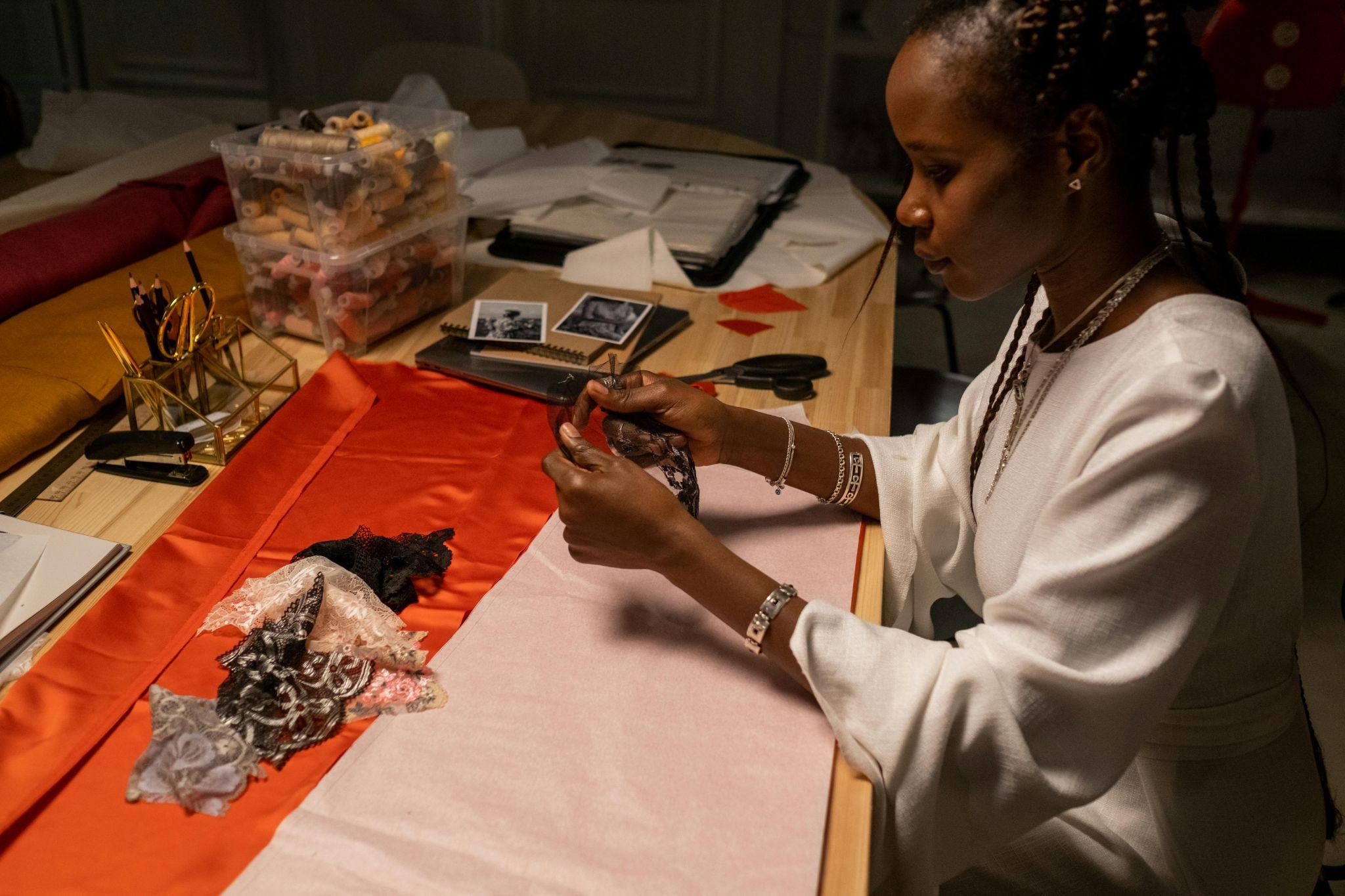Smart Fabrics: How Your Clothes Will Soon Replace Your Smartphone
Smart fabrics represent a revolutionary convergence of textiles and technology that may soon render traditional smartphones obsolete. These intelligent textiles incorporate microelectronics, conductive materials, and wireless capabilities directly into the fabric structure, transforming ordinary clothing into interactive interfaces. Unlike conventional wearables that merely attach to clothing, smart fabrics integrate technology at the fiber level, enabling seamless functionalities ranging from biometric monitoring to wireless communication while maintaining comfort and wearability.
The Evolution of Smart Fabrics
The journey from simple textiles to technology-embedded fabrics spans decades of innovation in materials science, electronics miniaturization, and textile engineering. This evolution demonstrates a profound shift in how we conceptualize the relationship between clothing and technology.
From Wearables to Woven Tech
Initially, wearable technology existed primarily as devices attached to clothing or worn as accessories. Early examples included clip-on pedometers and wristwatch calculators—functional but distinctly separate from the garments themselves. The true breakthrough came with the development of conductive yarns and electronic textiles (e-textiles) that incorporated technological capabilities directly into the fabric structure.
Companies like Myant and Loomia pioneered techniques for integrating microelectronics into textile production processes, creating fabrics that could conduct electricity while maintaining flexibility and comfort. This transition marked the crucial shift from “technology on clothing” to “technology as clothing,” paving the way for truly integrated smart fabrics.
Key Milestones in Smart Fabric Development
| Year | Development | Significance |
|---|---|---|
| 1990s | First conductive fabrics | Enabled basic electrical conductivity in textiles |
| 2004 | Project Jacquard by Google | Demonstrated industrial-scale production of touch-sensitive fabrics |
| 2015 | Self-powered smart textiles | Eliminated need for external batteries through energy harvesting |
| 2020 | Washable circuit integration | Solved durability issues for practical daily use |
| 2023 | Neural fabric interfaces | Enabled direct control through subtle muscle movements |
This progression reflects not just incremental improvements but fundamental paradigm shifts in textile engineering capabilities. The most recent developments have moved beyond simple conductivity to create fabrics with computational and sensing capabilities comparable to those found in modern smartphones.
Core Technologies Enabling Smart Clothing
The transformation of ordinary fabrics into interactive, intelligent materials relies on several core technologies working in concert.
Embedded Sensors and Actuators
Modern smart fabrics incorporate multiple sensor types directly into the textile structure:
- Pressure sensors detect touch, pressure distribution, and movement
- Temperature sensors monitor body and environmental conditions
- Optical fibers measure heart rate and blood oxygen levels
- Stretch sensors track muscle activity and joint movement
- Biochemical sensors analyze sweat composition for health monitoring
These sensors utilize materials like piezoelectric polymers, which generate electrical signals when deformed, and thermochromic compounds that change properties with temperature fluctuations. Companies like Sensing Tex have developed manufacturing processes to integrate these components without compromising fabric comfort or drape.
Equally important are actuators—components that transform electrical signals into physical actions. These include shape-memory alloys that contract when heated electrically, electroactive polymers that change shape in response to voltage, and microfluidic systems that can alter fabric properties by moving tiny amounts of liquid through channels in the material.
Energy Harvesting and Storage Solutions
For smart fabrics to replace smartphones, they must solve the persistent challenge of power supply. Several approaches show promise:
Triboelectric nanogenerators (TENGs) convert mechanical energy from body movement into electricity. Each step or arm swing generates small amounts of power that, when accumulated, can sustain low-power operations. Research at Georgia Tech has demonstrated fabrics that can generate up to 5 watts per square meter during normal walking1.
Photovoltaic textiles harvest solar energy using flexible solar cells woven into the fabric. Recent breakthroughs in organic photovoltaics have created solar fibers less than 0.5mm thick that can be incorporated into various textile structures without affecting comfort.
For energy storage, textile-based supercapacitors and flexible batteries integrated directly into fabric layers provide power reserves. These components use carbon nanotube-infused fibers or graphene-coated textiles to store electrical charge while maintaining flexibility.
Wireless Communication Capabilities
Communication capabilities transform smart textiles from isolated devices into connected systems. Several technologies enable this connectivity:
- Bluetooth Low Energy (BLE) modules woven into seams connect to nearby devices
- Near Field Communication (NFC) chips embedded in cuffs or collars enable contactless transactions
- LoRaWAN integration allows long-range, low-power connectivity for outdoor activities
- Body Area Networks (BANs) use the body’s natural conductivity to transmit data between fabric components
These technologies facilitate data exchange with external devices and cloud services, allowing smart fabrics to access computational resources beyond their physical constraints—much like smartphones leverage cloud computing for advanced functionality.
Applications of Smart Fabrics in Daily Life

The practical applications of smart fabrics span multiple domains, from healthcare to personal expression.
Health Monitoring and Medical Uses
Smart fabrics offer unprecedented capabilities for continuous health monitoring. Medical-grade textiles by companies like Hexoskin and Chronolife can monitor vital signs including heart rate, respiratory rate, and skin temperature with clinical accuracy. These fabrics detect subtle changes that might indicate health issues before traditional symptoms appear.
For patients with chronic conditions, smart fabrics provide remote monitoring solutions that reduce hospital visits while maintaining medical oversight. Diabetes patients benefit from glucose-sensing fabrics that analyze sweat composition, while cardiac patients wear garments that continuously monitor heart rhythm abnormalities.
Fitness and Performance Tracking
Athletes and fitness enthusiasts gain comprehensive insights from smart workout clothing that measures:
- Muscle activation patterns during exercises
- Form correction through posture analysis
- Hydration levels via sweat composition
- Recovery metrics including heart rate variability
- Performance analytics with real-time feedback
Unlike smartphone apps that provide general fitness data, these garments offer biomechanically specific feedback tailored to individual movement patterns. Professional sports teams increasingly use these technologies to optimize training protocols and prevent injuries.
Interactive Fashion and Personal Expression
Smart fabrics enable dynamic clothing that adapts to environmental conditions and user preferences. These include garments with:
- Color-changing capabilities responding to temperature or touch
- Programmable lighting elements for aesthetic expression
- Shape-shifting properties that adjust fit based on activity
- Fragrance-releasing microcapsules activated by specific conditions
- Interactive patterns that respond to sound or proximity
Fashion designers like CuteCircuit have created collections featuring these technologies, demonstrating how smart fabrics merge technological functionality with aesthetic expression.
Advantages Over Traditional Smartphones
Smart fabrics offer several distinct advantages over conventional smartphones that make them compelling alternatives for many digital interactions.
Hands-Free Operation and Accessibility
Unlike smartphones that require dedicated attention and manual interaction, smart fabrics enable truly hands-free operation. Commands are executed through:
- Voice recognition systems integrated into collar microphones
- Gesture control detected by fabric movement sensors
- Haptic interfaces that respond to taps or swipes on clothing surfaces
- Bioelectric signals from muscle movements captured by fabric sensors
This hands-free functionality proves particularly valuable during activities where phone use is impractical or dangerous, such as cycling, cooking, or operating machinery. For individuals with physical limitations, smart fabrics offer enhanced accessibility by eliminating the need for fine motor control required by touchscreens.
Continuous Monitoring and Real-Time Feedback
Smart fabrics maintain constant contact with the body, enabling uninterrupted monitoring impossible with smartphones. This continuous data collection provides:
| Capability | Smart Fabric Advantage | Smartphone Limitation |
|---|---|---|
| Health metrics | 24/7 monitoring | Periodic, user-initiated checks |
| Environmental exposure | Continuous awareness | Limited by installed sensors |
| Activity tracking | Automatic and comprehensive | Requires carrying device |
| Contextual awareness | Intimate knowledge of body state | Limited to location and manual input |
This persistent awareness allows smart fabrics to provide timely, contextual information without user prompting—a significant advance over smartphones that require deliberate checking.
Challenges and Considerations

Despite their promise, smart fabrics face several hurdles before they can fully replace smartphones.
Durability and Maintenance
Electronic components must withstand conditions that traditional electronics never encounter:
- Repeated stretching and compression during wear
- Exposure to sweat, oils, and environmental contaminants
- Regular cleaning processes including machine washing
- Physical stress from daily activities and storage
Current solutions include encapsulation technologies that seal electronic components in waterproof, flexible polymers and modular designs with detachable electronic modules. Companies like Levi’s and Google have collaborated on washable smart garments with removable electronics, demonstrating viable approaches to these challenges.
Privacy and Data Security
Smart fabrics continuously collect intimate data about physical condition, location, and activities, raising significant privacy concerns. These concerns include:
- Vulnerability to unauthorized data access through wireless connections
- Potential for continuous surveillance through embedded sensors
- Questions about data ownership and third-party access
- Lack of comprehensive regulatory frameworks for wearable data
Industry leaders argue that on-device processing can mitigate many of these risks by limiting data transmission to necessary information only. Nevertheless, robust encryption and transparent data policies remain essential for consumer trust.
Future Outlook and Innovations
The trajectory of smart fabric development points toward increasingly sophisticated capabilities that further challenge smartphone dominance.
Integration with Augmented Reality
Next-generation smart fabrics will likely incorporate holographic projection capabilities and spatial computing interfaces that render physical screens unnecessary. Research at institutions like MIT’s Media Lab demonstrates fabric-based optical systems that can display information on any surface or create mid-air visualizations.
These developments could transform how we access visual information, replacing the smartphone screen with ubiquitous display capabilities woven into everyday clothing.
Expansion into Various Industries
Beyond consumer applications, smart fabrics are poised to transform multiple industries:
- Healthcare: Hospital gowns that monitor patient conditions and adjust room settings automatically
- Construction: Workwear that detects environmental hazards and provides worker safety alerts
- Automotive: Interior fabrics that adjust comfort settings based on passenger biometrics
- Military: Uniforms with integrated threat detection and team communication capabilities
- Agriculture: Protective clothing that monitors environmental conditions and worker health
This cross-industry adoption will accelerate development and reduce costs through economies of scale, further hastening the replacement of smartphones with fabric-based alternatives.
Conclusion
Smart fabrics represent not merely an evolution in wearable technology but a fundamental reimagining of how we interact with digital systems. By integrating technological capabilities directly into the clothing we already wear, these materials eliminate the need for separate devices while providing more intimate, continuous, and contextual functionality than smartphones can offer.
As manufacturing techniques advance and costs decrease, the transition from smartphone-centered digital experiences to fabric-integrated ones appears increasingly inevitable. The question seems less about whether smart fabrics will replace smartphones, but rather when and how completely this transformation will occur. The clothes of tomorrow won’t just cover our bodies—they’ll connect us to our digital world in ways more seamless and natural than holding a device ever could.




